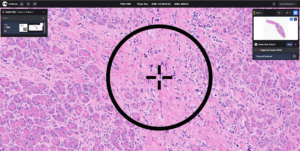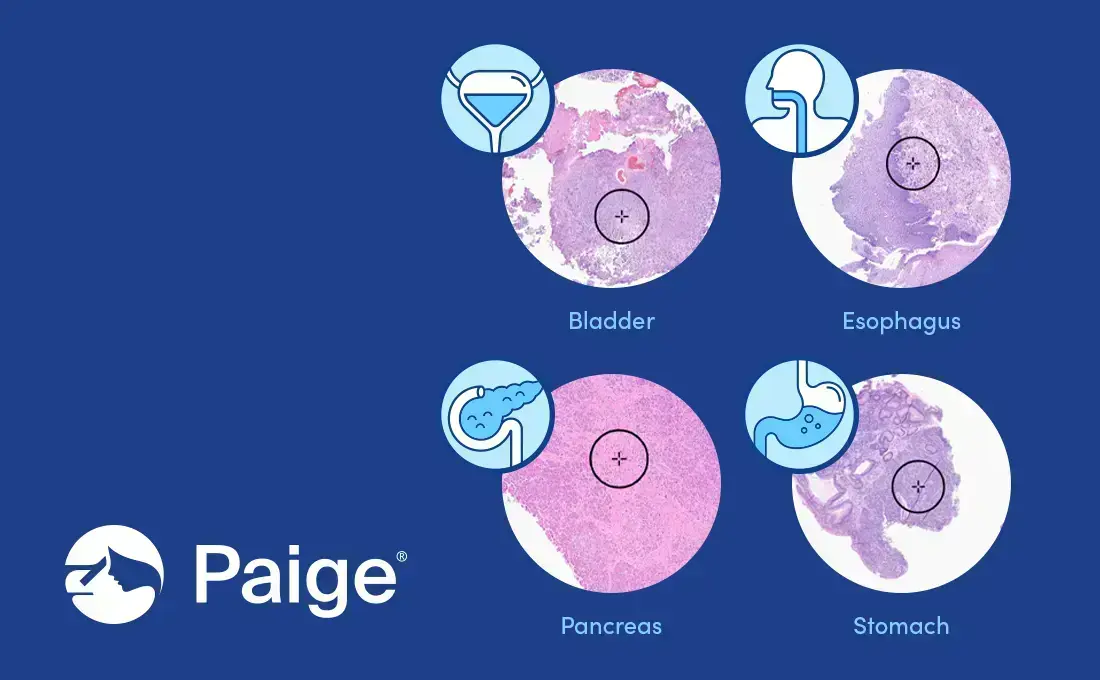Cancer is extraordinarily complex. There are over 200 known types and subtypes, and even within a single subtype, individual tumors contain genetic diversity. Such exponential variety is what has made understanding cancer, and therefore treating it, a continuous challenge.
AI presents an opportunity to overcome some of these issues, as it can recognize cancer patterns that would not be visible or comprehensible to humans at an incredibly fast pace and large scale. However, AI is only as powerful as its training and dataset. Herein lies yet another challenge – how can we not only collect data that is fully representative of the breadth and depth of cancer varieties, but successfully train the AI on that data?
Paige and Microsoft joined forces to answer that question. Since our inception, Paige has had exclusive access to one of the largest datasets in pathology from a world-class institution that represents patients from all over the globe with many kinds of disease. We have been diligently working to digitize this information, now resulting in a repository of over 6 million whole-slide images that can be used for AI training. Microsoft is one of the leading tech companies in the world today with enormous compute power and AI training expertise. By combining our resources, Paige and Microsoft were able to create the world’s first and largest million-slide scale Foundation Model for pathology and oncology, a feat that directly enables us to tap into the enormous potential of AI and introduce novel capabilities to pathology that will transform the practice.
A Foundation Model is an incredibly robust AI model that is trained on millions of whole-slide images across many different diseases, tissues, and organs. This allows the Foundation Model to understand the pathology of multiple diseases more deeply than any AI could before and gives organizations the ability to build multiple downstream applications much more rapidly than they were previously able to – from pattern detection to cellular segmentation, identification and biomarker discovery. This is transformational in the world of pathology AI.
For example, following the release of Virchow, Paige’s Foundation Model, Paige created the Paige Pan Cancer Suite, a single AI application capable of detecting cancers in over 16 tissue types with validated analytical precision. Critically, the application also identifies rare cancers with industry-leading sensitivity. Achieving these results with traditional AI would be nearly impossible, because rare cancers, as the name suggests, are not prevalent enough to produce the volume of training data needed to effectively teach AI their patterns. Backed by a Foundation Model like Virchow, however, the AI can deeply learn the morphology of various cancer types and subtypes, even when certain cancers exhibit similar morphologies in some tissues while demonstrating distinct morphologies in other tissue types.
To better understand the gravity and potential impact this AI application can have in cancer detection, let’s look at the clinical utilization on a retrospective case. The Paige Pan Cancer Suite was applied to pancreatic tissue of an older adult. After a quick analysis, the AI identified a tiny metastatic focus of neuroblastoma. This is a significant find and one that may have been overlooked, since neuroblastomas are rare outside of pediatric cases and are typically not found in pancreatic tissue. The tumor burden was also quite minimal, which would further complicate the detection of this cancer. Having access to this application’s extraordinary capabilities would mean that the pathologist would be able to uncover something they may not have thought to look for before and ensure that even this very small tumor was not missed. Additionally, with a single tool working across tissue types, pathologists of diverse specialties could significantly enhance their overall turnaround times, ultimately benefiting the patient.

Notably, the model was not trained on any neuroblastoma cases. The Foundation Model approach succeeded in developing a tool of such sophistication that it could identify a cancer it had never encountered before. This breakthrough opens up a realm of possibilities for the role of AI in cancer detection and treatment.
Of course, this is incredibly exciting because of the impact it can have on patients. Rare cancers when combined account for about 40,000 new cases per year in the US alone.1 Armed with AI-powered insights, pathologists anywhere, whether specialist or generalist, can ensure that they do not miss even the smallest or most complex instances of these rare cancers, and can ensure this patient population is treated effectively.
But it is also exciting because it signals a future where pathologists can access insights, they never would have been able to see before that could inform diagnosis and treatment for the better. With a Foundation Model of this scale available for pathology, the opportunities to improve cancer care are nearly limitless.
—
1Greenlee RT, Goodman MT, Lynch CF, Platz CE, Havener LA, Howe HL. The occurrence of rare cancers in U.S. adults, 1995-2004. Public Health Rep. 2010;125(1):28-43. doi:10.1177/003335491012500106
*Vorontsov E, Bozkurt A, Casson AI et al. VIRCHOW: A MILLION-SLIDE DIGITAL PATHOLOGY FOUNDATION MODEL. ArXiv. Updated Preprint posted online January 18, 2024. arXiv:2309.07778v5

